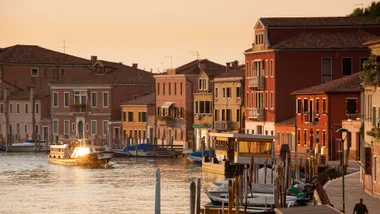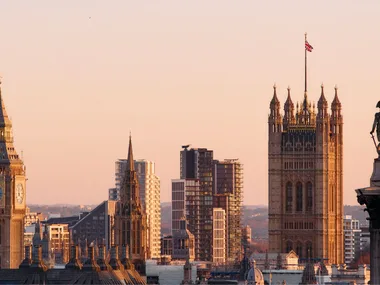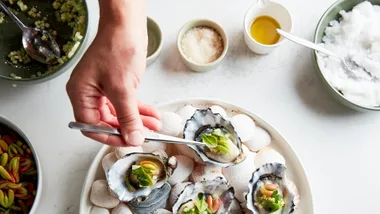THE FINE PRINT
**GETTING THERE
** Kyneton is 85km north-west of Melbourne via the Calder Freeway; Castlemaine is 40km further north-west. Vline trains travel almost every hour between Melbourne and both towns.
**STAY
Cnr Piper & Powlett sts, Kyneton, (03) 5422 1211
[Empyre Hotel
](http://empyre.com.au) 68 Mostyn St, Castlemaine, (03) 5472 5166
High St, Maldon, near Castlemaine, 0413 123 650
116 Mollison St, Kyneton, 0419 001 518
Chewton, near Castlemaine, (03) 5472 1677
30 Burton Ave, Kyneton, (03) 5422 2639
**EAT
72 Piper St, Kyneton, (03) 5422 2039
31 Templeton St, Castlemaine, (03) 5472 5311
[Coffee Basics
](http://coffeebasics.com) 1 Halford St, Castlemaine, (03) 5470 6270
[Dhaba at the Mill
](http://dhaba.com.au) 18 Piper St, Kyneton, (03) 5422 6225
233 Baker St, Castlemaine, (03) 5472 4400
34 Piper St, Kyneton, (03) 5422 1129
Little Swallow Café
58a Piper St, Kyneton, (03) 5422 6241
37c Piper St, Kyneton, (03) 5422 3769
Mrs Smith’s Hotel Restaurant
91 Piper St, Kyneton, (03) 5422 6844
Origini
213 Barker St, Castlemaine, (03) 5472 1766
89b Piper St, Kyneton, (03) 5422 3553
62 Piper St, Kyneton, (03) 5422 7400
164 Baker St, Castlemaine, (03) 5472 3568
[Royal George Hotel
](http://royalgeorge.com.au) 24 Piper St, Kyneton, (03) 5422 1390
29a Piper St, Kyneton, (03) 5422 2777
**SEE & DO
**[Arts Indulgence Tours
](http://artsindulgencetours.com.au) Led by Jean Rankin. Castlemaine area, 0409 567 072
482 Bendigo Rd, Porcupine Flat, (03) 5475 1085
[Castlemaine Art Gallery & Historical Museum
](http://castlemainegallery.com) 14 Lyttleton St, Castlemaine, (03) 5472 2292
[Flynn Silver
](http://flynnsilver.com.au) By appointment, Kyneton, (03) 5422 6868
66 Piper St, Kyneton, (03) 5422 6695
37b Piper St, Kyneton, (03) 5422 1710
68 Piper St, Kyneton, (03) 5410 8835
98 Piper St, Kyneton, (03) 5422 3215
[Check out more images from our Kyneton and Castlemaine, Victoria feature here.
](/kyneton-and-castlemaine-victoria-gallery.htm) “Garden beds,” says Denis Sheppard in greeting. It’s not a question. He and his brother Brian Sheppard are Kyneton’s farm-machinery dealers. Denis knows city-dwellers when he sees them, and he has a fair idea of what they’re here to buy. It’s pretty clear that I, in my lipstick and knee-high black boots, am not here to upgrade my tractor. (Truth be told, I’m not in the market for one of his corrugated-iron raised garden beds either, but he takes it pretty well.)
The Sheppard brothers’ dealership occupies a gravel-surfaced lot in the little country town of Kyneton, population 6000, an hour north-west of Melbourne’s airport via the freeway. Kyneton’s saddlery, stockfeed suppliers and saleyards, along with the Sheppard brothers’ tractors, all point to the town’s agricultural roots, and to a time when regional Victoria opened for business at nine on Monday morning, closed by one on Saturday afternoon, then headed to the footy or the netball.
Kyneton, though, is a town transformed by tree-changers. Denis and Brian Sheppard’s neighbours at their dealership on Piper Street are the restaurateurs, café owners and artists whose businesses mean that this bluestone-paved strip is a vibrant precinct busiest on weekends. Down at the showgrounds, the Kyneton Tigers are still kicking off at 2.20pm on Saturdays during the footy season, but at the same time, weekenders from Melbourne are examining ceramics at Stockroom, contemplating the vintage semaphore for sale at Kabinett, or starting a late lunch at the Royal George.
So how many tractors does a street full of artists and latté-sippers need? “The guy who’s got the restaurant in the old morgue bought a tractor from me,” says Brian Sheppard. “And Annie bought her tractor from me.”
“Annie” is chef Annie Smithers, who, when she opened her eponymous bistro in a former flour mill in 2005, unknowingly launched the current resurgence of Piper Street. “Piper Street was just at the point where people like me, who had no money and didn’t have the bits and pieces to start a shop or a restaurant in Melbourne, could afford it,” she says.
Every restaurant worth its Courier-fonted mission statement has a kitchen garden these days, but few in Australia have embraced the paddock-to-plate philosophy as fully as Annie Smithers. Smithers started her garden on a small scale but it was uneconomical. “I was going to either give it away or plough up the big paddock and buy a tractor, and that’s what we decided to do.”
Today she employs Simon Rickard, an expert on heirloom vegetables and fruit, to coax enough produce from her block of land in nearby Malmsbury to supply up to 95 per cent of her restaurant’s needs. In the morning, I examine a bed of globe artichokes, their abundant foliage hiding tight purple heads; that same evening, I’m eating the artichoke hearts in the restaurant, tucked into a bowl of gnocchi flavoured with chervil and tarragon, along with deep-green broccolini, crème fraîche and pecorino. It’s a simple, deeply flavoured dish that encapsulates Rickard’s directive to Smithers when they first dug up the puggy paddock: “I said to Annie that the garden has to drive the restaurant, not the other way around, and I really admire the way she’s run with that.”
On the other side of Piper Street, chef Emma Chapple at Star Anise Bistro has also discovered the thrill of growing what she cooks. “I just thought I’d have a go,” she says. “When I saw I was getting great results, I dug up the rest of the backyard.” In the area behind her restaurant, carrot tops are waving in the wind and the bed of heirloom lettuces looks like a coral sea.
And 25 minutes up the freeway in Castlemaine, yet another chef, Alex Perry at The Good Table, is finding his green thumbs, with a lot of help from the local Mt Alexander Sustainability Group. A group of volunteers gathers at the garden near his restaurant every Monday morning to weed, compost and cultivate; Perry benefits from the resulting harvest. “I really want the community to be involved,” he says. “Producers want to connect with us, and we want to connect with them.”
Annie Smithers, Star Anise Bistro and The Good Table are regularly booked out on Saturday nights. Clearly, what Smithers, Chapple and Perry are doing is resonating with diners. But the reason, ultimately, why these chefs are doing what they’re doing is that they love it. “It’s a childish excitement, it’s just heaven on earth, says Smithers. “All those expressions – paddock to plate, blade to fork and whatever they are – they’re all very cute, but nothing quite replaces that thrill of digging something up and cooking it.”
Passion, it seems, has replaced precious metal as the currency in a region that made its first fortune in the gold rush of the 1850s and 1860s. When prospectors made the journey on foot or on horseback from Melbourne via Kyneton to the goldfields of the Mount Alexander district, centred on Castlemaine, it wasn’t for the enjoyment of getting dirty but in the hope of becoming rich. “Conditions were miserable, with the nomadic diggers living in tents and other temporary structures,” says the caption to a photograph, circa 1851, in the Castlemaine Historical Museum.
From those temporary beginnings, Castlemaine, like Kyneton, soon poured its new-found wealth into public buildings in keeping with its burgeoning size. Castlemaine today has wide streets and dozens of heritage buildings to not many more than 8000 residents. The Theatre Royal, the tourist information centre (once the market) and even the IGA supermarket (the old tech school) are living history. The railway line, too, the steel artery that connects Castlemaine to Melbourne in 90 minutes, is both life-giving and historically significant. Stations along the route mirror the overnight stops made by prospectors walking to the goldfields: Diggers Rest, Gisborne, Woodend, Kyneton, Castlemaine, Bendigo.
It’s not the dream of getting rich that draws artists to the region today. Rather, it’s the affordability of housing and the community of like-minded people. It’s also the harsh beauty of the landscapes here. This is old, worked-over country: paddocks punctuated by the grey skeletons of trees; country roads lined with acacia and yellow gorse; patches of box-ironbark forest changed forever by gold-mining.
Jean Rankin has spent a good part of her life surrounded by artists: she’s married to world-renowned landscape painter Robert Maclaurin. The couple moved to Castlemaine from Scotland on the strength of its reputation among their Victorian artist friends – never having seen the town. Today, Rankin leads tours of artists’ studios in Castlemaine and the surrounding area. “There was an element of surprise and delight in seeing the spaces people were creating in which to work,” she says of discovering the creative talent in her adopted home town.
Printmaker Jeff Gardner lives and works in what was once a car museum in the bush north-east of town; now the building houses Cascade Print Workshop. “The environment here definitely has an influence on my work,” Gardner says as we examine his etching The Sound of Giants. “This [artwork] is like a little trip outside at night when the stars are out. With all the rain, we’ve had an enormous number of frogs outside, croaking away.”
Back in town, David Frazer works from a studio he helped to build in the front garden of his house. His recent etchings, lithographs and paintings are unsentimental yet poignant representations of the region in which he works. “I’m a bit of a bogan trapped in an artist’s body,” he says. “I do lots of caravans and crappy houses.”
Artist Sarah Gabriel, who practises from Lauriston Press studio and gallery in Kyneton, recently exhibited the works of numerous regional printmakers under the banner “The Country Trail”: “It’s about finding something as you walk down a dirt track, or living in the country and the impact it has on you,” she says. “For the printmakers I think there’s that common theme up here.”
According to the Print Council of Australia, the Goldfields area is home to more printmakers than any other non-metro area in Australia. Add to them the scores of potters, sculptors and painters in the region, and Jean Rankin need never repeat an itinerary on her arts tours, which are not commercially focused. “It’s not about selling and buying; it’s about widening people’s gaze,” she says. “The focus is on creative individuals and their work, but I’m not shying away from the best coffee and pastries in town.”
She’s surely referring to Apple Annie’s in the centre of Castlemaine, where John Stekerhofs makes perfect croissants from Belgian butter while his wife Annie oversees the small café.
Or she could be referring to Origini, where Piedmont-born Luca Sartori makes espresso and bucks the regional-seasonal mantra to the extent that he serves mozzarella di bufala and prosciutto di San Daniele in a tiny café curated to exquisite simplicity by his wife, interior designer Ingrid Gaiotto.
Or perhaps Rankin means Coffee Basics, where beans are roasted in what was once the crematorium of the old Castlemaine hospital. “No, I’ve never felt any bad vibes here,” says Elna Schaerf-Trauner, whose husband, Edmund Schaerf, is off distributing their coffee around the state. “We had someone in here to smudge it,” she adds, waving her arms around to demonstrate the purifying ritual. There’s nothing institutional about breakfast and lunch here: the extravagant sausages and cakes reflect the couple’s Austrian heritage, and the sourdough bread supplied by their neighbours at Sprout Bakery is a local legend.
What the Stekerhofs, the Sartori-Gaiottos, the Schaerf-Trauners and so many others in Castlemaine have in common is a past in the city, a future in a vibrant country town, and a passion for doing a small thing exquisitely and generously: a croissant, an espresso, some roasted arabica beans.
Hotelier John Ganci is a renaissance man working on a larger scale: his Empyre Hotel is aptly named. He purchased the 1860 Albion Hotel building – “unloved was the best way to describe it” – in 2003, and set about creating the new landmark. “I gave up my career as an advertising photographer to supervise the renovation, which took a year and a half, and then I spent the next six months painting the entire hotel and tiling all the bathrooms,” he says. “I’ve always been a hands-on person.”
The realisation of Ganci’s vision is formal. The grosgrain-trimmed bed linen is Italian, the antique furniture French-polished, the wallpaper in the main dining room original Anaglypta from the 1870s. Yet I feel cared-for here in the hands of Ganci and his attentive staff. The Empyre is a living hotel, not a period piece.
The same is true of another hotel two blocks west. When Hayden Winch took over the Criterion Hotel in late 2009, it had such a reputation for biffo it was known as the Swinging Arms. Reborn as the Public Inn, “it’s based on the idea of a public house, almost a lounge room of the community,” Winch says. “Having said that, it’s not a front bar with a TAB and the footy on in the corner.” The timber tables have been sandblasted at a local foundry to bring out the grain in the oregon, and the menu, too, offers textures well beyond a rural pub’s remit. The wine offering – a wall of barrels from which pours are available in three sizes, complemented by an excellent list – is one of the most interesting in town.
For Castlemaine’s most outstanding food, though, it’s back to The Good Table, where chef Alex Perry draws on all his experience at Melbourne’s Café di Stasio and MoVida in cooking small plates designed for sharing. His smoked eel terrine is richly flavoured and makes the best of Castlemaine’s landlocked location (the eel is from nearby Skipton). He melts Holy Goat fromage frais over cauliflower and serves it with dukkah; he simmers sago with cinnamon and serves it cold, unmoulded, with a delicate Granny Smith sorbet. The confidence, accomplishment and timeliness of his menu and his cooking would be impressive in Sydney, Melbourne, Brisbane or Perth; here in his home town, it stands out like nuggets of gold in an alluvial field.
And when it comes to the difficulty of finding good staff in a small town, Perry has a trick under his toque. “I do help out on the odd occasion as what they call a dish-pig,” says Alex’s dad, Peter Perry. Perry senior happens to be the longest-serving director of any public art gallery in Australia: he’s held the position at the Castlemaine Art Gallery since 1976, well before Perry junior was born. So how’s his performance as a dishwasher? “He does very well,” says Alex Perry.
His dad, in turn, is full of admiration for the effect his son and tree-changers of the same generation have had on the region. “The energy of these young people coming back, wanting to have this lifestyle – there’s been a new energy, not just in the visual arts,” says Perry senior.
Over in Kyneton, another statesman of the central Victorian arts community has also noticed a passing of the baton. Silversmith Dan Flynn, 54, is hardly an emerging artist: he and and his brother John Flynn, 56, have been commissioned to create works for Buckingham Palace and the Vatican. “Piper Street has finally hit its straps,” Dan says. “And Annie Smithers has been the lynchpin.” He pauses, then revises. “It’s female-driven. It’s all strong females. It just hit me then.”
Caris Haughan and Vanessa Partridge had no experience as florists when 14 months ago they opened Prunella, a botanical whimsy two shopfronts away from Annie Smithers. “I’ve always harboured secret fantasies of having a flower shop and I thought, that’s not very realistic,” Partridge says. “There was my scientist father going, ‘no’.” Haughan chimes in: “My accountant father going, ‘mmm’.” Today, local brides are hiring them to create the floral equivalent of, say, a Vivienne Westwood gown. “To have a space in which you just spend your time creating, dreaming and making it happen, it’s the most fulfilling, the most satisfying thing,” says Haughan.
Sculptor Jason and his partner Magali Gentric do just that at Stockroom, having taken over the old butter-factory-then-wool-mill and filled its 500 square metres with art and ideas. “We’re very passionate about the beautiful thing of bespoke and one-off and things made with love,” says Waterhouse, “and there’s a really exciting re-emergence happening at the moment.”
Kabinett, like Stockroom, is made for foraging. If you’re in the market for a semaphore, a book press, or any of scores of items whose tags begin with “industrial”, you’ll find rich pickings here. When owner Melissa Macfarlane isn’t cooking at her Melbourne restaurant The Crimean, she’s visiting auction houses and travelling the world – India, France, Bulgaria – collecting pieces for her vintage emporium.
The street’s newest safekeepers, its next generation of food lovers, are also reinvigorating – and celebrating – its heritage. At Mr Carsisi, an all-day hub for lovers of modern Middle Eastern flavours, Matt and Clare Fegan are serving some of the town’s smartest food. The former iceworks still has some rough edges; inside, a ruddy bloke who’d pass for a stock and station agent is tucking into hummus scattered with pomegranate seeds, and pistachio baklava with Turkish delight semifreddo.
The bluestone mill that now houses Indian restaurant Dhaba dates from the 19th century, but Punjab-born Jessi Singh immediately felt at home here when he first saw the building: “In India, every village has its own mill – we buy only whole grain.” With his wife, Brooklyn-born Jennifer, Singh offers a short menu of curries and the like – and he hopes one day to be able to turn up the heat. “We used to say the locals were in training,” he says of the town’s tolerance for the chillies he loves.
Number 91 Piper Street was built as a residence in the 1880s; in recent months chef Cathy Foote has transformed it into a restaurant serving eastern Med-leaning small plates to share (saganaki, fig relish and pickles, say) and hearty mains such as beef cheeks with cauliflower purée in a Moorish-influenced setting that reflects her extensive travels in Turkey and Egypt.
And what about the old butcher shop, now Inner Biscuit? I’d eaten there three times and never noticed its menu was vegetarian till Mara Szoke mentioned her dark past as a macrobiotic vegan. Her café and pâtisserie sells itself on its inspired cakes, not on the v-word or on Szoke’s résumé, which includes stints with Greg Brown and at Babka and Loafer, Melbourne baking institutions all.
The food DNA along the length of Piper Street, in fact, is extraordinary for such a small town. Little Swallow Café, which has customers queuing down the street for the likes of casareccia pasta with pork sausage, cauliflower, anchovies and herbs, has Jacques Reymond in its blood; Annie Smithers bistro has Stephanie Alexander. And the street is breeding its own success: its original thin-crust-pizza maker, Damian Sandercock, sold Pizza Verde to Brooklyn native David Hart to start up Piper Street Food Co and capitalise on the address’s reputation with his handmade charcuterie.
As for wine, the 14-page list at the fine-dining landmark Royal George Hotel highlights Kyneton’s proximity to not only the Macedon Ranges but other renowned Victorian wine regions: Heathcote, Nagambie, the Pyrenees, Bendigo. The hotel’s bar is the cosiest place in town to spend an afternoon with a bottle of pinot noir from Domaine Epis. Or come earlier, before the weekend’s special roast sells out – it might be a whole snapper, or lamb or beef cooked for 12 hours, served to share.
Annie Smithers takes a break from her restaurant every afternoon between lunch service and dinner. It gives her time to drive up to her property at Malmsbury, to lock up the geese and the chooks to keep them safe from foxes. She’s not romantic about country living. “There are days of such sublime beauty that they make you weep,” she says, “and there are days that are so hard. But I suppose it’s allowed me to dream, and somehow the dream has arrived.”
 prue ruscoe
prue ruscoe









